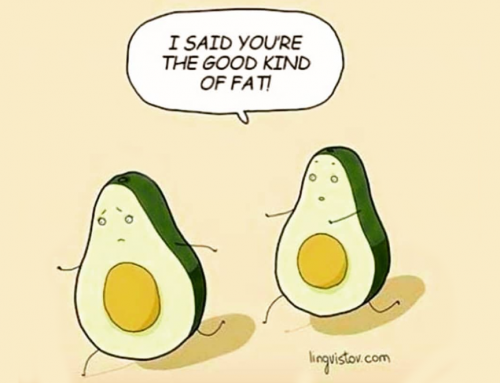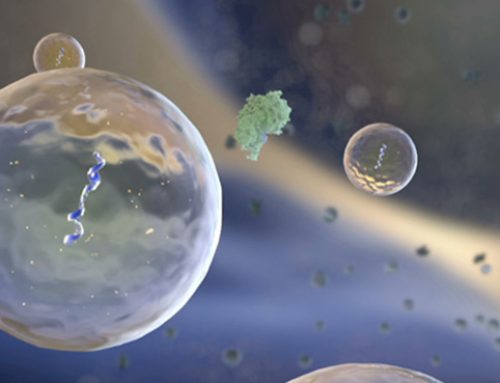Testosterone is the major sex hormone in the human body. It’s production starts in the brain and ends in the testes in men and the ovaries in women. The adrenal glands located on top of the kidneys also produce testosterone in limited amounts. The brain and the testes work in concert to keep production in the normal range. When testosterone levels are low the brain signals the testes to make more and when there is enough testosterone, the byproducts of testosterone production signal the brain to stop. The regulation of this production referred to as the Hypothalamic-Pituitary-Gonadal Axis can be disrupted at any point causing either primary or secondary hypogonadism. Provided you have and intact H-P-G axis and sufficient leydig cell function in the testes to produce testosterone in the first place these seven tips can help boost your body’s natural production of testosterone.
1. Eat Healthy Fats
The consumption of health fats encourages and is necessary for the production of adequate testosterone while a low fat diet will reduce testosterone levels. Consume these healthy fats on a regular basis to ensure hormone production:
- Walnuts
- Almonds
- Pistachios
- Olive oil
- Flaxseed
- Avocado
- Salmon, Tuna, Trout, Sardines
2. Follow a Low Glycemic Nutrition Plan
The cornerstone of all health is nutrition. Consuming foods that cause high blood sugar spikes will drop your testosterone production and the resultant high insulin levels from the high blood sugar will compete with growth hormone for the same receptor site. Other benefits of following low glycemic nutrition plans are: consistently high energy levels, eating satisfaction, efficient immunity, maintenance of healthy weight, and potential for increased longevity.
When a low glycemic meal is consumed, blood glucose elevates at a slower pace, allowing the pancreas to moderate the amount of insulin released so it is relative to the volume of glucose. Because there is less insulin circulating in the blood stream, fewer cells absorb glucose; levels never fall below optimal range. Food cravings and low energy crashes diminish once you adjust to the low glycemic diet, as the body is consistently able to utilize body fat as its primary source of energy.
Consuming balanced low glycemic meals maintains a consistent balance of hormone levels, allowing the body to function efficaciously with optimal health.
A low glycemic nutrition plan is not only important for the reasons indicated above, but also because:
Insulin Competes with Growth Hormone
These two hormones use the same receptor site to communicate with cells; therefore, only one hormone can be functionally elevated at a time. Managing insulin with a low glycemic diet will allow growth hormone to be optimally high and functional.

Healthy frequent meals equal steady state glucose and insulin levels, increased metabolism and decreased cravings. Steady state glucose and insulin levels equal increased fat utilization and decreased fat production.
The other side of the coin!
When carbohydrates are consumed, the body breaks down, absorbs, and transports them via the bloodstream in the form of blood glucose to the cells for use as energy. However, most cells cannot absorb glucose without the presence of insulin, a hormone that stimulates cells to absorb the glucose. Therefore, when blood glucose rises, so does insulin. This is a good, natural, physiological process that only becomes problematic when high glycemic foods are consumed on a regular basis:

High glycemic foods increase blood glucose rapidly, resulting in high insulin levels. Insulin is a “storage” hormone. It not only promotes the absorption of sugar, but, because there is already enough free energy in the bloodstream in the form of glucose, insulin inhibits cells from releasing their stores of fatty acids. Fatty acids comprise stored fat tissue. Therefore, when insulin levels are high, the body cannot utilize body fat as an energy source.
Insulin does not immediately dissipate as glucose levels fall. In the presence of insulin, cells will continually absorb glucose, causing blood levels to fall to an unhealthy level. Because the brain can only utilize glucose for energy, food cravings and low energy become typical experiences.
Effects of a high glycemic diet:
- Fluctuating energy levels
- Excessive food cravings
- Lack of satiety from eating
- Easy onset of fatigue
- Weight gain
- Increased abdominal fat which leads to an increased risk of Metabolic Syndrome
- Increase in cellulite
- Decreased testosterone production
3. Supplement with Vitamin D
When Vitamin D levels decline during the fall and winter months, so do your testosterone levels. Supplementing with Vitamin D during these months will help ensure adequate hormone production. If you live north of Florida than you most likely are vitamin D deficient. It is the most common vitamin deficiency I see on a daily basis and the effects from supplementation are profound.
4. Consume foods with Zinc
Low levels of zinc are associated with low levels of testosterone. Be sure to consume these foods to help boost your T levels!
- Nuts, especially cashews
- Dark chocolate
- Spinach
- Seafood like crab, lobsters, and shrimp
- Lamb
5. Run Sprints or High Intensity Interval Training (H.I.I.T.)
Running sprints or short bursts of intensity lasting approximately 6 seconds dramatically increase the levels of testosterone and the catecholamines: adrenaline and noradrenaline.
A HIIT session consists of a warm up period of exercise, followed by six to ten repetitions of high intensity exercise, separated by medium intensity exercise, and ending with a period of cool down exercise. The high intensity exercise should be done at near maximum intensity, 90%. The medium exercise should be about 50% intensity. The number of repetitions and length of each depends on the exercise. The goal is to do at least six cycles, and to have the entire HIIT session last between fifteen and twenty minutes. HIIT is considered to be an excellent way to maximize a fat loss workout. HIIT increases the RMR, resting metabolic rate, for the following 24 hours. HIIT turns on your metabolic fire! Specific hormones that are released during this type of training are growth hormone and catecholamines, which contribute significantly to decreases in body fat. Catecholamines are fat destroying hormones that have been shown to liberate both intramuscular and subcutaneous fat. Steady state exercise only results in small increases in catecholamines. HIIT is a powerful stimulator of growth hormone. Growth hormone limits lipoprotein lipase, which is a fat storage enzyme, excellent. What is another powerful stimulator of GH, getting a full night of sleep. HIIT has been extensively studied and is significantly more effective at fat reduction than steady state exercise and also increases the levels of circulating testosterone.
6. Lift Heavy Weight
There are numerous resistance-training programs you can follow; hypertrophy plans, strength plans, strength and endurance plans, body weight workouts, rage workouts and more. All of these plans will cause a specific adaptation to the imposed demand. Resistance training or weight training is a potent stimulator for testosterone production. Be sure to include some form of weight training 2-3 times per week to help boost your body’s natural production of testosterone. Interestingly, rest periods of 90 seconds between sets has the greatest effect on post workout testosterone and growth hormone levels.
7. Avoid Chronic Stresses
It is vitally important to rest your body as well. Adequate rest promotes recuperation and recovery. Excessive training, stress, and/or inadequate amounts of sleep contribute to elevate cortisol levels, which is antagonistic to and reduces testosterone levels. Appropriate rest and recovery also promotes healthy growth hormone levels. Also, avoid too much of a good thing. Excessive or chronic training can lead to overtraining syndrome, which is counterproductive to a balanced hormonal environment.
For many of us, despite following all of these recommendations, you may still suffer from testosterone deficiency from one of the many causes or conditions:
- Viral Infection
- Radiation/Chemotherapy
- Genetic conditions
- Leydig cell dysfunction
- Various Medications
- Excessive Alcohol
- Aging
- Hemochromatosis
- Chronic Systemic Disease
- Diabetes
- Chronic Obstructive Pulmonary Disease
- Metabolic Syndrome
- Tumors
- Environmental Toxins
Testosterone deficiency is associated with the onset and/or worsening of these medical conditions:
- Cardiovascular disease
- Dementia
- Bone demineralization
- Joint & Tendon degeneration
- Diabetes & Metabolic Syndrome
- Depression
- Vascular endothelial dysfunction
- Increased Carotid intima media thickness and vaso-reactivity
- Obesity
If you are following a healthy nutrition plan, exercising regularly, drinking plenty of water, getting adequate rest and recovery but are still noticing these symptoms, then you may be suffering from testosterone deficiency despite doing all the right things. :
- Poor memory, concentration, or focus
- Moody or depressed
- Lack of motivation or drive
- Lack of stamina
- Poor recovery or increased recovery time from exercise
- Loss of muscle mass or difficulty maintaining muscle mass
- Increasing belly fat or difficulty losing belly fat despite exercising
- Fatigue especially in the afternoon or after eating
- Poor libido
- Decreasing erectile quality
- Loss of hair or reduced shaving
- Hot flushes or sweats
The first step is to get the correct lab work and have a physician experienced and knowledgeable in the diagnosis, treatment, and management of male hormone deficiencies and all of its various nuisances and intricacies.
Testosterone deficiency presents with a recognizable symptom complex that is highly amenable to hormone therapy if a reliable and predictable treatment plan is consistently administered.
Testosterone is supremely important for the health and vitality of men and women. Optimizing its production by following these seven vital steps will help to ensure your personal health and well-being.
As you may come to notice in all of my writings there is always mention of the pillars of human existence that support the foundational principles of all human health. Nutrition, Exercise, Water, Rest, Recovery and Hormone Optimization are those pillars that must be cared for daily to ensure your personal health and fitness. We may not be able to stop Mother Nature but we sure can try and slow her down!
Do you have Low-T? Click Here to take our FREE Low-T quiz and find out today.



